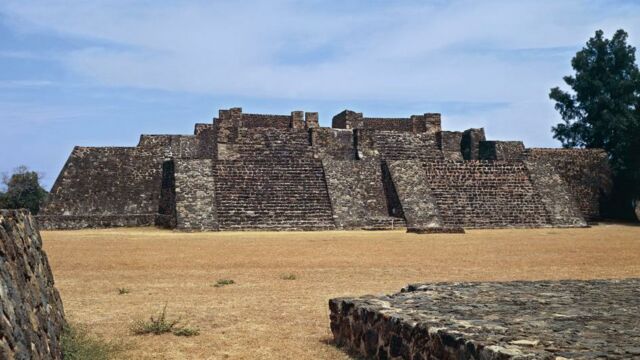In addition to shaking the Earth, earthquakes can also sometimes make waves within the scientific community. This was the case with this discovery made at the heart of a Mexican pyramid, a temple that was hiding in plain sight all along.
Discover our latest podcast
The starting point for this incredible discovery was in September 2017. At the end of the wet season, a massive earthquake, 7.1 on the Richter scale, shook Mexico. As a result, many historical remains were damaged. Among them was the pyramid of Teopanzolco, a monument located in the state of Morelos, 43 miles into the south of Mexico.
To verify what state it was in, the archaeologists at the Mexican National Institute of Anthropology and History (INAH) undertook radar scanning of the heart of the building and discovered the extent of the damage. ‘The pyramid suffered considerably from the reorganisation of the core of its structure,’ explains archaeologist Bàrbara Konieczka. This major damage paradoxically paved the way for the extraordinary discovery made by experts.
A temple is hidden for centuries
During these verification procedures, it was an entire temple that was detected within the pyramid itself. According to the archaeologists’ estimates, the temple’s construction could date to around the year 1150.This period saw the emergence of the Tlahuic civilisation, a people who lived on the plateau located in the centre of Mexico during this period, and today is within the state of Morelos.
According to specialists, this temple measuring 20 feet by 13 would have been built in honour of Tláloc, the Aztec god of rain. Among other remains, archaeologists uncovered a thurible and ceramic pottery shards. In addition to this first temple, a second sanctuary was also found, dedicated to the god Huitzilopochtli, another Aztec deity.
A destructive uncovering
These two temples were discovered at the same level as the upper part of the pyramid, which was particularly affected by the earthquake since it was already weekend by the humidity accumulating for decades. As Bàrbara Koniecza pointed out, ‘the soil in the two sanctuaries collapsed, then tilted, which also compromised the stability of the pyramid.’
The stability of the building is even more precarious since its structure is the result of theinterweaving of several centuries of history. If the first temple dates back to around the year 1150, the pyramid in which it is located dates to around 1550, a much later date than that of the temple it contains, which does not surprise experts.
According to Bàrbara Koniecza, constructing new buildings above ancient structures were indeed common among the Tlahuiques. ‘Despite what the earthquake caused, we must thank this natural phenomenon for having revealed this important structure that has changed the dating of the archaeological site,’ said Isabel Campos Goenaga, director of the INAH centre in Morales. Truly an archaeological mosaic revealed by a less than an opportune event















